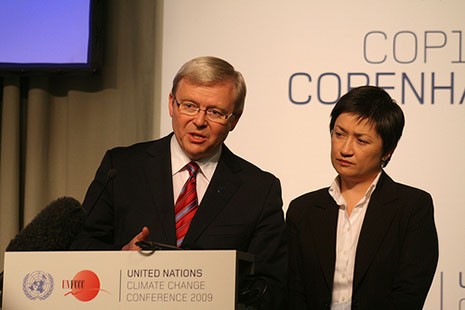AUSTRALIA is one of the largest per capita emitters of greenhouse gases in the world. The optimists argue that because we currently waste so much energy it should be easier for us to reduce our emissions than other developed countries, simply by increasing our energy efficiency. The pessimists argue that the entire fabric of the Australian economy, indeed our way of life, is based on the idea that we use lots more energy to run our houses, cars and public buildings than others. Indeed, they say, attempts to reduce the amount of energy we waste would lead to a loss of our “competitive advantage.”
Imagine if we substituted the term “energy productivity” for “energy efficiency.” In other words, what would happen if the objective of government policy was to help firms and households achieve their current level of “output” while using less energy. Over the past two decades Labor and Coalition governments alike have become increasingly obsessed with the productivity of wharves, government owned enterprises and the workforce, but the productivity of the way we use energy has never been seen in the same light. Indeed, the fact that Australia has lots of coal lying around often seems to be a rationale for using it wastefully.
How then should we drive innovation in the way we use energy and, in turn, reduce our reliance on cheap, but dirty, coal-fired electricity? In an interesting twist, Labor currently claims to prefer a “market-based mechanism,” in the form of an emissions trading scheme, while the Coalition is pushing the need for “direct action.”
While much has been made of the differences between these two schemes, they have more in common than either party would like to admit. Both schemes ignore the clear scientific evidence that we need to make significant reductions in emissions, and both schemes seek only to reduce emissions by 5 per cent by 2020. Both schemes ignore the economic evidence that early action to reduce emissions is cheaper than delayed action. And both schemes provide enormous concessions to the biggest polluters. While Labor wants to give away 95 per cent of the pollution permits required by the big emitters, the Coalition is proposing to let those same polluters off the hook for 100 per cent of their emissions. Neither party is following the principle of polluter pays.
While the Rudd government is working hard to deride the Coalition’s focus on “direct action,” it has spent billions of dollars on subsidies for insulation, photovoltaic solar cells, interest-free green loans and a renewable energy target. Perhaps the government’s lack of faith in the Coalition’s ability to achieve emission reductions is based on the shortcomings of its own direct action policies?
So what should good climate policy look like, and how can the current deadlock in the Senate be resolved? The first element of an efficient, effective and equitable solution is to introduce a genuine carbon price and not provide exemptions to the biggest polluters. But it’s important to recognise that while a carbon price might be a great way to raise revenue it is a poor way to change behaviour. The only reason that Australians waste so much energy is that it is so cheap that many households and businesses don’t give it a second thought. Over the past twelve months the electricity price has risen around 20 per cent in most states yet the demand for air conditioners has continued to rise steadily. So, if we are going to change behaviour we will also need some well-designed direct actions.
Australian cities are poorly designed and we use a huge amount of energy to move people around them. Cities like New York, Tokyo and London are literally built on great transport systems, yet in Australia we think that calls for investment in public transport are merely quaint. Australia’s hospitals, aged care homes, schools and public buildings use huge amounts of energy but neither party seems at all interested in trying to kill two birds with one stone by investing in updating our essential services while reducing their energy use.
The best hope for a sensible first step towards reducing our emissions has been the proposal by the Greens to adopt one of Ross Garnaut’s earliest suggestions – namely, that we introduce a fixed carbon price to get the ball rolling. While it is unlikely that the Greens and government will agree on emission reduction targets, there is no good reason why they should not be able to agree that some carbon price is better than none.
Rather than do nothing to tackle climate change while we argue about how it should be done, it makes much more sense, both politically and environmentally, to introduce a carbon price first and sort out the rest along the way. Penny Wong has said repeatedly that something is better than nothing; the test now is whether she is willing to take her own advice. •




